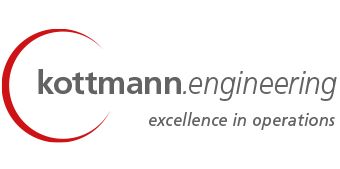STRATEGIC RESTRUCTURING
We create holistic sustainable target visions and translate these into (sub-)strategies towards achieving your objective
ESTABLISH
ACTUAL POSITION
Understand
market and competition
DEFINE
GOALS
Sharpen business
target vision
IMPLEMENTATION
OF THE STRATEGY
Translation into an
operational course of action
IMPLEMENTATION OF A
TECHNOLOGY AND INNOVATION CHECK
The technological positioning of a company with regard to product functions and product costs is key to its competitiveness
A company must supply a strategic response to the criteria regarding technology and cost leadership to secure its market share.
For both criteria, the company must define goals for its product segments and thereby describe the competitive situation and market environment.
The size of the objective tension and the intensity of focusing on one or both of these criteria may vary depending on the corporate strategy. However, it is clear that with a transparent gap to the competition in the case of both criteria, there is no competitiveness or the loss of competitiveness will certainly occur.
We guide the identification process and provide support for your restructuring.
TECHNOLOGY LEADERSHIP
The company understands the ACTUAL technological positioning of its products on the market and is aware of further market development and the TARGET state to be expected from the market.
The route tailored to the respective product is described in the form of the required functional features of the products.
ESTABLISHING ACTUAL TECHNOLOGICAL POSITION
Understanding technology developments on the market.
One of the requirements of determining the ACTUAL situation is a clear understanding of what type and to what extent technological developments are proceeding on the market. Very often, these changes have an existential impact on the market and competitiveness (e.g. “technological revolutions” such as e-mobility, autonomous driving, networking, digitisation).
Carrying out an analysis of the strengths and weaknesses of existing products.
Make the unique selling points of the company, with regard to the functional features and cost characteristics of its products, transparent. Insight regarding future customer requirements drives the required need for change in the form of function and costs.
DETERMINING TECHNOLOGICAL GOALS
Target state and required need for change
are defined for the company in the form of (product) functions and costs. Implementation is supported by determining core competence fields.
These include unique selling points which are crucial for the corporate success envisaged.
IMPLEMENTATION OF THE TECHNOLOGICAL STRATEGY
Development of core competencies
- Development of technological core competencies (unique selling points)
The need for change is translated and implemented in core competence fields. Using a course of action based on specific action plans, unique selling points are further enhanced. These help achieve competitiveness and even technological market leadership. Technological core competencies are jointly defined with the company and transferred and developed into the business and resource plan.
Adaptation of standard competencies
- Adaptation of efforts which are not part of the core competence fields
As a consequence of this course of action, any further efforts which do not directly contribute to achieving unique selling points/differentiating characteristics are reduced to a state to be defined. These standard competencies and technologies are generally widely available on the market. The advantages and disadvantages of a vertical integration of production are also assessed.
The coordinated approach between a further development of the required core competencies, associated with an adaptation of not immediately necessary standard competencies and technologies, is a decisive contributory factor to achieving competitiveness with regard to costs towards cost leadership.
COST LEADERSHIP
Carry out cost check:
The company understands the ACTUAL costs of its products compared with the market and is aware of the TARGET costs to be expected from the market.
The route tailored to the respective product is broken down into the key components and described in the form of cost categories and operational features.
ESTABLISHING ACTUAL COST POSITION
Create transparency and understand cost positioning on the market. Illustrate relationship between fixed costs and variable costs and provide this in the comparison with the competitor and market development.
DETERMINING TARGET COSTS SYSTEMATICALLY
Establish market price and own cost development and carry out comparison. Create clarity regarding the cost categories, in particular the future quotas of material and added value.
Best practice:
Carry out analyses of competitors. Compile assessment regarding the cost structure of the market players. This includes carrying out imputed product cost analyses of existing products on the market (shadow calculations). This approach should also include working out and understanding the structural differences in the market providers as far as possible.
Greenfield approach:
This establishes a minimal/ideal approach (limit value thinking) with which the product can be manufactured. The basis of this approach is that it is in principle possible to achieve these cost structures. This means, we assume that there will be a company on the market which will approach this goal at some point.
This means that the Greenfield approach may show a lower cost level than assessments of competitors and market price development previously available.
The “Greenfield approach” specifies the significant goal. The following parameters, amongst others, are taken into consideration here:
- Quotas of added material and added value
- Quotas of variable costs and fixed costs
- Quotas of low cost (LCL) and high cost locations (HCL)
- Quotas of logistical costs (total landed cost)
compared to the wage benefit of the production site - Degree of localisation regarding procurement of material in the respective regions
- Attaining goal efficiencies (quality, OEE, productivity, logistics, etc.)
ACHIEVING TARGET COSTS
Companies which achieve their target costs are generally speaking characterised by the fact that, in conjunction with an ACTUAL analysis carried out in detail, they adopt a very systematic course of action together with a distinctive consistent management approach.
Cost work
Summary of points for achieving target costs
- Contrast actual costs with the target costs.
Determination of a cost goal which can be established by consulting the “Greenfield analysis” (goal for the entire organisation). - Target costs of the functional areas
- Conduct strategy development workshops in the individual functional areas of the company with the objective of target cost attainment (strategy revision, e.g. regarding quality, production, logistics, purchasing, supply streams). At the same time, derive connections to and impacts on global supply streams and on the international production network. One of the outcomes must comprise defining a tailored site concept for each site in the network.
- Work out approaches to converting fixed costs into variable costs (“alleged fixed costs”; use moderation methods which support “thinking outside the box”).
- Screen the existing organisational structures, business and leadership processes. Adjustment to the results, established from the “strategy development process”.
- Assess organisational development regarding “central and/or local approach”.
Restructuring
In very many cases, it is seen as imperative that an increasing demand for change and transformation is required to achieve the objective.
The need to restructure existing structures and processes (incl. business and leadership processes) arises. The objective in the re-organisation of structures is, through the measures introduced, to create basic principles for the company which generate a maximum efficiency and speed to achieve the target vision. The staff should as a result support adapted and newly created structures to deliver the necessary transformation benefit.
Organisation and processes
Organisational structures and processes are key factors for success at achieving your objective. These are basic conditions for successful implementation. The time available is, in many cases, a very important factor here. It is effective to embed the necessary speed of change organisationally, systemically and with the aid of processes.
The staff
People make transformation
Ultimately and above all, people and staff build on organisational structures and processes. The crucial, leading and implementing link to targeted and lasting business success. Strategies and target states are translated into an operational approach jointly with the staff. The staff are always part of it. The changes take place with the staff in “their space”. Project landscapes (PMO), defined individual projects together with the assigned detailed measures, emerge. The people identify with the transformation process and lead this gradually and increasingly on a broad basis towards the goal.
Culture of change
A company-specific culture of change emerges. This is the real energy in the company. The challenge of Change Management is to release and direct the energy of all staff towards achieving corporate goals (target vision).


